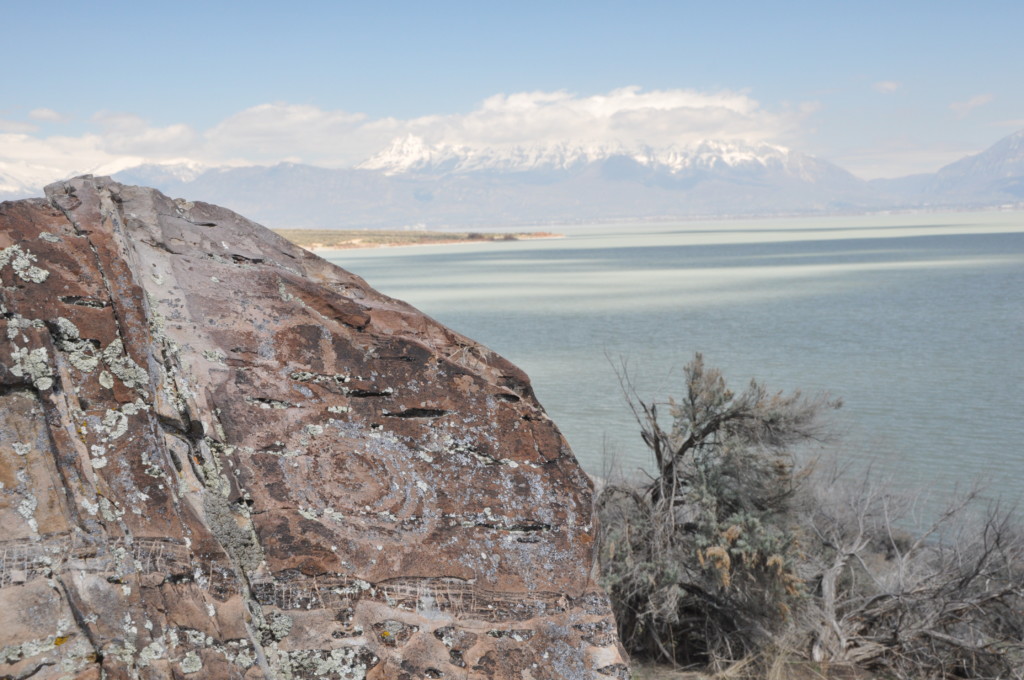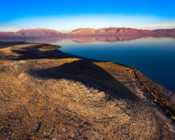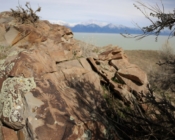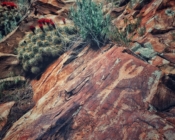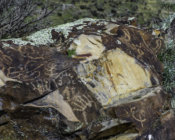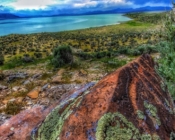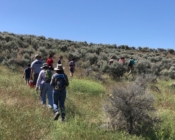The Smith Family Archaeological Preserve (SFAP) was established in 2013 as the result of a generous land donation by the Adelbert Smith Family Trust. The 196 acre preserve protects more than 200 prehistoric petroglyphs and multiple features in an effort to educate and inspire the local community and others through preserving the regions prehistoric past.
The rock art at SFAP was created over thousands of years and during multiple occupations from as long ago as 13,000 BCE. Under a cultural resource management plan established for the SFAP, the Archaeological Conservancy pledges to protect cultural resources for future generations and second, educate the local community and others about the prehistoric heritage of the region. This plan includes increasing viewing accessibility to rock art panels through a system of trails and markers, securing the property, documentation and mapping of significant artifacts and features, and land and erosion stabilization and control. Tours of the park are currently available by appointment. Contact a.smith.conservancy@gmail.com for more information.
THE SMITH FAMILY ARCHAEOLOGICAL PRESERVE STORY
Utah is known for its rock art panels and prehistoric occupation, however few private landownerships in Utah were as protected and treasured as the land now occupied by The Smith Family Archaeological Preserve (SFAP). Located along the beautiful western shoreline of Utah Lake in Utah County, Utah, SFAP occupies 196 acres featuring rock outcroppings, knolls, ridge lines and boulders. Prehistoric people who lived along and visited the western shoreline of Utah Lake understood the benefits of this mixed landscape as did local farmer and cattle rancher Adelbert Smith who purchased the property in the 1950’s.
Recognizing the archaeological significance of the land’s prehistoric occupation in 2012, The Adelbert Smith Family Trust arranged for Lane D. Richens Senior Staff Archaeologist at Brigham Young University, U.S. Forest Service rock art expert Charmaine Thompson, and members of The Archaeological Conservancy to take a tour of the property. The positive outcome of this meeting coupled with the family’s vision for preservation of the property’s prehistoric cultural resources resulted in the Trust’s 2013 donation to The Archaeological Conservancy. The partnership forged between The Archaeological Conservancy and the Smith family continues to thrive under the SFAP’s stewardship program.
The Smith Family Archaeological Preserve boasts over 200 petroglyph panels, and several features including a stone circle, rock cairns, a low-lying rock wall, and intermittent debitage. The rock art at SFAP was created over thousands of years and during multiple occupations from as long ago as 13,000 BCE. Occupational periods represented by the rock art on SFAP include the Paleo-Indian, Archaic, and Fremont periods. Under a cultural resource management plan established for the SFAP, the Archaeological Conservancy pledges to first protect cultural resources for future generations and second, educate the local community and others about the prehistoric heritage of the region. This plan includes increasing viewing accessibility to rock art panels through a system of trails and markers, securing the property, documentation and mapping of significant artifacts and features, and land and erosion stabilization and control.
VOLUNTEER AT SFAP
To fulfill its mission of volunteer stewardship development, the Smith Family Preserve seeks volunteers to help protect and monitor the nearly 200 acres to prevent trespass and vandalism incidents.
- To volunteer, a minimum commitment of 10 hours a year and attendance to one of four meetings held throughout the year is required.
- Volunteers may also contribute to maintaining the website, providing guided tours and outreach programs, fund raising, and project work.
- For more information on volunteering at Smith Family Archaeological Preserve, please visit us on Facebook.
DONATE
Please support The Archaeological Conservancy’s efforts to preserve the Smith Family Archaeological Preserve and others like it. Visit our donation page to learn more.

